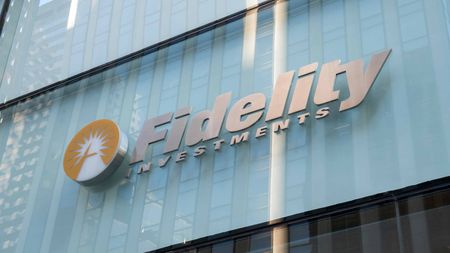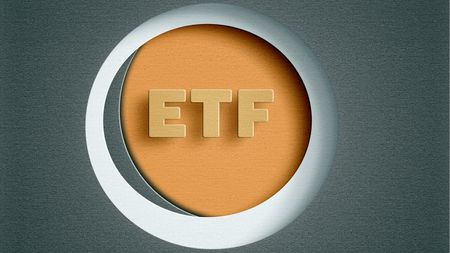Say Goodbye to Another Kip 25 Fund
Buy Excelsior Value & Restructuring soon, before it converts to a load fund.
Piloted by the redoubtable Dave Williams since 1992, Excelsior Value & Restructuring has been one of those rare funds that you could just put away and hold.
In 2007, a dismal year for most value funds, Excelsior returned 10%. In the decade through January 31, 2008, the fund (symbol UMBIX) returned an annualized 11%, an impressive six percentage points per year ahead of Standard & Poor's 500-stock index.
Alas, it looks as though we'll soon have to remove Excelsior from the Kiplinger 25, the list of our favorite no-load funds. That's because it looks as though the fund -- and other members of the Excelsior family -- will begin levying sales charges in late March.

Sign up for Kiplinger’s Free E-Newsletters
Profit and prosper with the best of expert advice on investing, taxes, retirement, personal finance and more - straight to your e-mail.
Profit and prosper with the best of expert advice - straight to your e-mail.
| Row 0 - Cell 0 | The Kiplinger 25 Says Goodbye to Champlain |
| Row 1 - Cell 0 | The 25 Best No-Load Funds |
The switch is the result of the acquisition of Excelsior's adviser, U.S. Trust, by Bank of America. The Excelsior funds will be branded as Columbia funds.
If you don't currently hold shares in Value & Restructuring, you might consider investing before the March switch. Assuming that shareholders approve all of the changes, existing Excelsior customers will be able to add to their holdings without paying a load after the change in status.
Based on the fee structure of other Columbia funds, most new investors will have to pay a 5.75% front-end sales charge for the class A shares and higher annual fees for the B and C class shares after the conversions take effect.
The change from no-load to load should have no effect on Value & Restructuring's management. Williams says the recent turbulence in the stock market has provided him with a chance to pick up some higher quality and faster growing companies: "I've been able to improve quality without paying up for it."
He's picked up shares of technology stocks such as IBM (IBM), Nokia (NOK) and Harris Corp. (HRS), in part because he thinks the switch in investor sentiment toward growth stocks and away from value stocks, which began in 2007, could take several years to play out.
Financial stocks have been crushed, so he is picking up some of these, too. "It's a no-brainer," says Williams, who owns shares of Morgan Stanley (MS) and Lehman Brothers (LEH).
He adds: "I don't care about next quarter's earnings. I think at least five years out when I buy a stock, since it takes that long for some restructurings to evolve." Williams holds his stocks for eight to ten years on average.
He's also looking abroad for growth. For instance, he holds Agco Corp (AG), an agricultural-machinery maker, mostly for its exposure to Brazil's booming farm sector. And down in Brazil, he owns oil giant Petrobras (PBR), airline GOL Linhas Areas Inteligentes (GOL) and an airplane manufacturer Embraer (ERJ), whose formal name is Empresa Brasileira de Aeronutica.
Williams is pulling back a bit from stocks of midsize companies. He likes to buy midcaps that are ripe for merger or acquisition by, for example, private-equity outfits. But this strategy isn't working well today, because the leveraged financing market that underpins leveraged buyouts is in acute distress. "In the last six months, we've had three companies whose deals fell apart," Williams says.
One of the refreshing things about Williams is the simplicity of his approach to stockpicking. Elaborate spreadsheets are not for him. "Numbers are important but are not my nitty gritty," he says.
Instead, he says, he looks for companies with above average business prospects and below-average valuations and a catalyst, such as restructuring, that will release value. And he likes to meet company bosses to hear their business plans. Most times, he says, the case to invest in a company can be laid out on a single piece of paper.
Get Kiplinger Today newsletter — free
Profit and prosper with the best of Kiplinger's advice on investing, taxes, retirement, personal finance and much more. Delivered daily. Enter your email in the box and click Sign Me Up.
Andrew Tanzer is an editorial consultant and investment writer. After working as a journalist for 25 years at magazines that included Forbes and Kiplinger’s Personal Finance, he served as a senior research analyst and investment writer at a leading New York-based financial advisor. Andrew currently writes for several large hedge and mutual funds, private wealth advisors, and a major bank. He earned a BA in East Asian Studies from Wesleyan University, an MS in Journalism from the Columbia Graduate School of Journalism, and holds both CFA and CFP® designations.
-
 RMD Deadline April 1: Five Tax Strategies to Manage Your 2025 Income
RMD Deadline April 1: Five Tax Strategies to Manage Your 2025 IncomeTaxable Income The April 1, 2025, deadline for required minimum distributions (RMDs) is fast approaching for retirees who turned 73 in 2024.
By Kelley R. Taylor Published
-
 Rising AI Demand Stokes Undersea Investments
Rising AI Demand Stokes Undersea InvestmentsThe Kiplinger Letter As demand soars for AI, there’s a need to transport huge amounts of data across oceans. Tech giants have big plans for new submarine cables, including the longest ever.
By John Miley Published
-
 The Kiplinger 25: Our Favorite No-Load Mutual Funds
The Kiplinger 25: Our Favorite No-Load Mutual FundsThe Kiplinger 25 The Kiplinger 25 is a list of our top no-load mutual funds that have proven capable of weathering any storm.
By Nellie S. Huang Last updated
-
 The 5 Best Actively Managed Fidelity Funds to Buy Now
The 5 Best Actively Managed Fidelity Funds to Buy Nowmutual funds In a stock picker's market, it's sometimes best to leave the driving to the pros. These Fidelity funds provide investors solid active management at low costs.
By Kent Thune Last updated
-
 The 12 Best Bear Market ETFs to Buy Now
The 12 Best Bear Market ETFs to Buy NowETFs Investors who are fearful about the more uncertainty in the new year can find plenty of protection among these bear market ETFs.
By Kyle Woodley Published
-
 Don't Give Up on the Eurozone
Don't Give Up on the Eurozonemutual funds As Europe’s economy (and stock markets) wobble, Janus Henderson European Focus Fund (HFETX) keeps its footing with a focus on large Europe-based multinationals.
By Rivan V. Stinson Published
-
 Vanguard Global ESG Select Stock Profits from ESG Leaders
Vanguard Global ESG Select Stock Profits from ESG Leadersmutual funds Vanguard Global ESG Select Stock (VEIGX) favors firms with high standards for their businesses.
By Rivan V. Stinson Published
-
 Kip ETF 20: What's In, What's Out and Why
Kip ETF 20: What's In, What's Out and WhyKip ETF 20 The broad market has taken a major hit so far in 2022, sparking some tactical changes to Kiplinger's lineup of the best low-cost ETFs.
By Nellie S. Huang Published
-
 ETFs Are Now Mainstream. Here's Why They're So Appealing.
ETFs Are Now Mainstream. Here's Why They're So Appealing.Investing for Income ETFs offer investors broad diversification to their portfolios and at low costs to boot.
By Nellie S. Huang Published
-
 Do You Have Gun Stocks in Your Funds?
Do You Have Gun Stocks in Your Funds?ESG Investors looking to make changes amid gun violence can easily divest from gun stocks ... though it's trickier if they own them through funds.
By Ellen Kennedy Published